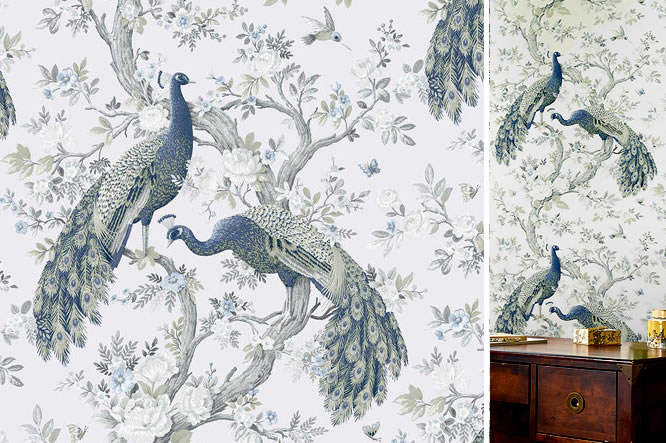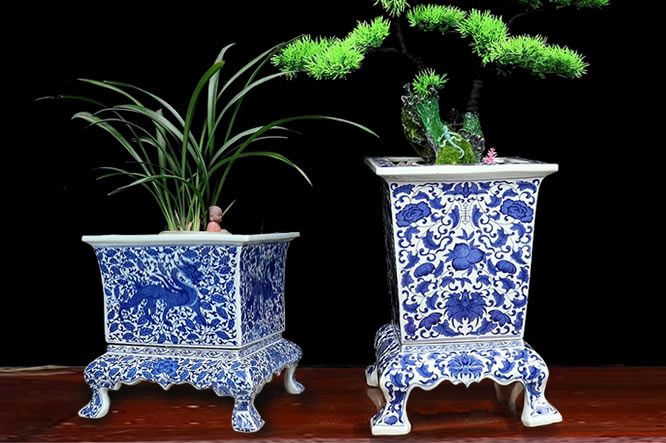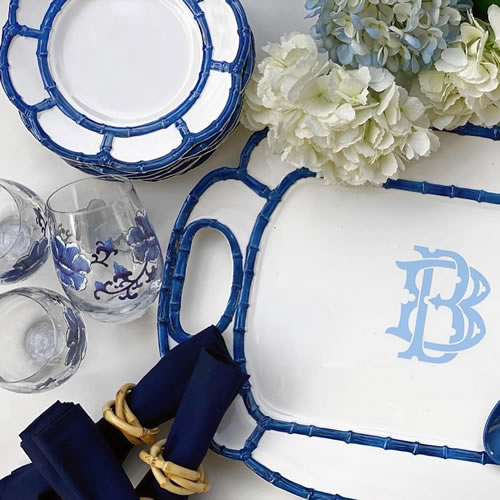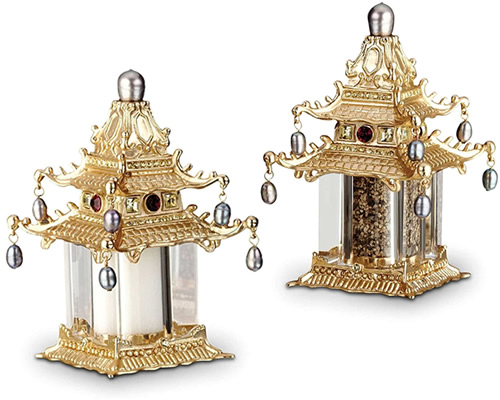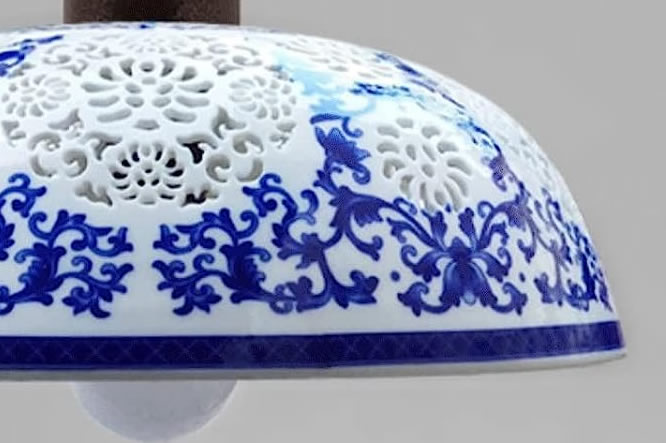Chinese Pavilion Garden Gazebo
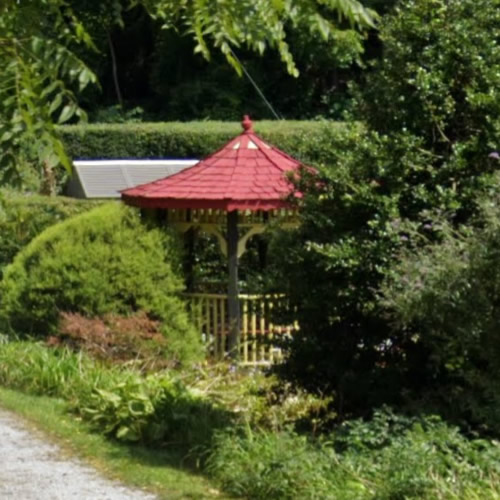
I was driving near my house and noticed this little Chinese pagoda in my neighbors yard. How adorable! And how come I never noticed it before? I used to drive this road all the time.
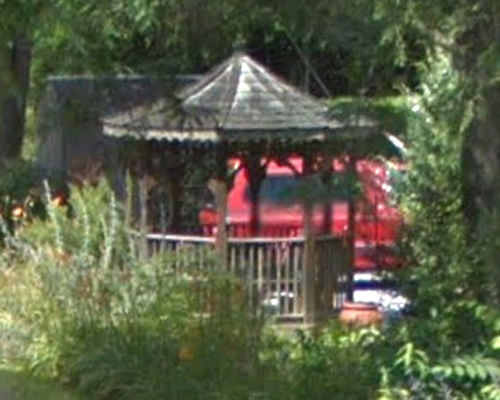
I went on Google Street View. The gazebo used to look like this.
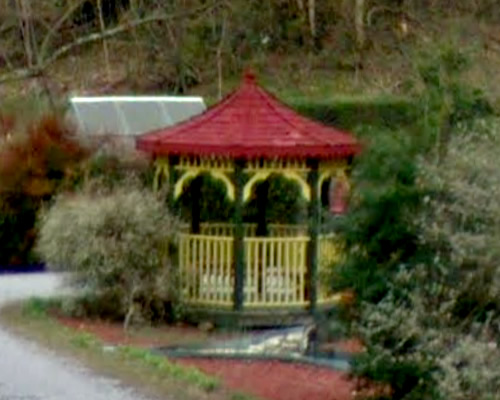
But it has been painted to look like a Chinese Pagoda for a while. When the Google Street View car drove by in 2017, it has the new paint.
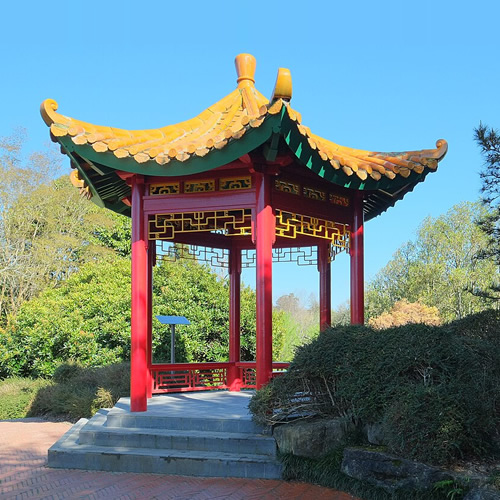
Photo by Pseudopanax
The red, yellow and green are perfect. I started clicking and found lots of inspiration for painting a garden pergola or gazebo to look Chinoiserie.
This example is in New Zealand.
The Ting Pavilion, which is a replica of a ting in Wuxi, is called ‘Leaning-against-river-pavilion’. The other name is the ‘Golden Pavilion’ a reference to the tile colour which was usually reserved for the emperor and represents wealth (gold). The red on the pavilion is also important representing good luck and prosperity.
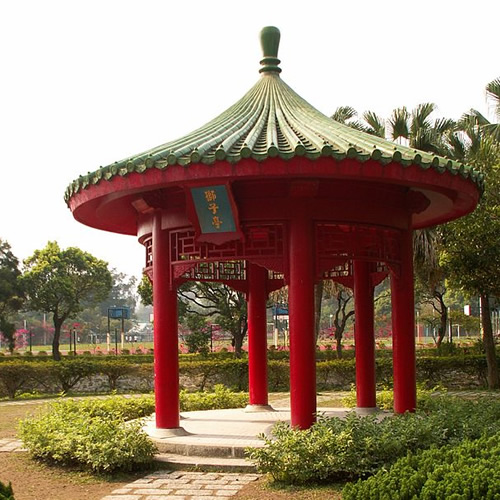
Pagoda Pavilion on the island in Weiyuan Lake, Chung Chi College
Photo by Lorenzarius
This red pagoda pavilion is in Hong Kong.
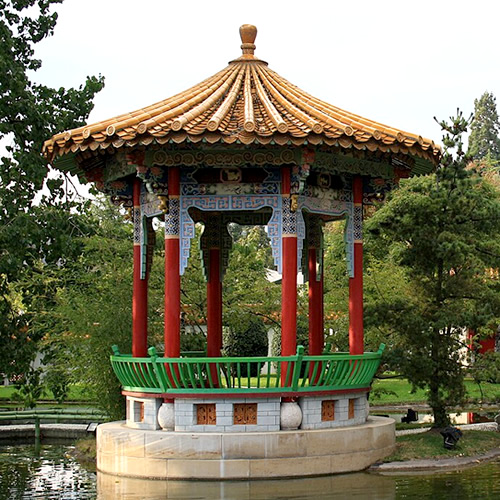
Photo by Roland Zh
This pagoda is part of a complex of Chinese buildings in a park in Zurich, Switzerland.
The Chinese Garden is located right by the lake at the Zürichhorn and was a gift from the city’s Chinese partner town of Kunming. At the center is a pond with a small island, pavilions and even a small palace on the banks. It is classed as a temple garden and is one of the highest-ranking gardens outside of China.
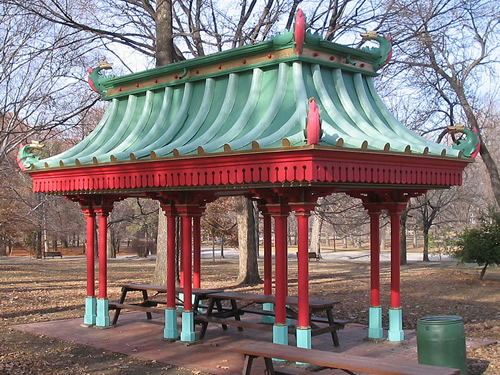
Photo by TMS63112
This over-the-top picnic table cover is in St. Louis, Missouri. You can rent the pavilion and the area for events.
The Chinese Pavilion is a reflection of the “Chinoiserie” style popular in pre-Victorian England, which is also visible in the Chinese Chippendale fencing used elsewhere in Tower Grove Park. Designed by Henry Thiele in the Anglo-Chinese style, the Chinese Pavilion is complete with dragons of sheet metal guarding upper and lower corners of the roof. In keeping with the Anglo-Chinese style, the six pairs of columns supporting the concave-hipped roof are painted lacquer red. Appropriately, Shaw and his horticulturist Gurney surrounded the Chinese Pavilion with a grove of Ginkgo trees. The pavilion was restored in 1992 with funds raised by the Friends of Tower Grove Park.
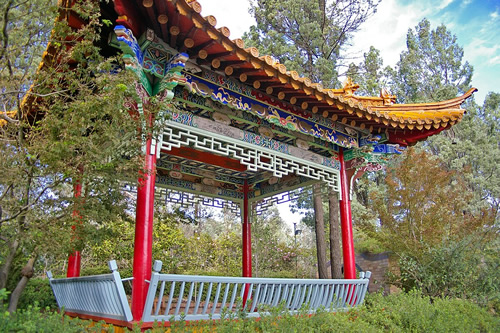
Photo by Bidgee
This amazing example of a Chinese Garden Building stands in a Camellia Garden.
…a central feature consisting of a Chinese-style pavilion should be provided to provide the link of the Camellia’s origin. Some work was carried out and plans drawn up for a Chinese pavilion and during subsequent visits by members of Council and citizens of Wagga Wagga to Kunming in China, the Kunming Government agreed to provide the City of Wagga Wagga with a Chinese pavilion as its gift towards the Australian Bicentennial and to cement friendly relationships between the City of Kunming and the City of Wagga Wagga.
Camellia Garden Chinese Pavilion in Wagga Wagga Botanic Gardens
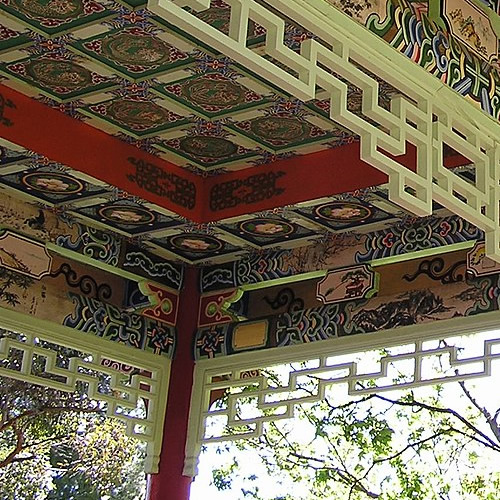
Photo by Golden Wattle
The Government of Kunming provided four persons to travel to Wagga Wagga. These consisted of a stone mason, carver, painter and the head of construction team who designed the pavilion and water feature.
…The Kunming Government in total provided the City of Wagga Wagga with the magnificent Chinese Pavilion, an entrance arch-way, stone lantern and a number of rocks to be used within the water feature next to the pavilion. The majority of material for this was shipped to Australia from China and was an enormous task considering over 5,000 glazed tiles were used on the roof of one pavilion alone as well as the inclusion of carved timbers, rocks and lanterns. The arrival of the material and the Chinese artisans took place simultaneously and construction of the pavilion was undertaken in the winter of 1998.
Camellia Garden Chinese Pavilion in Wagga Wagga Botanic Gardens
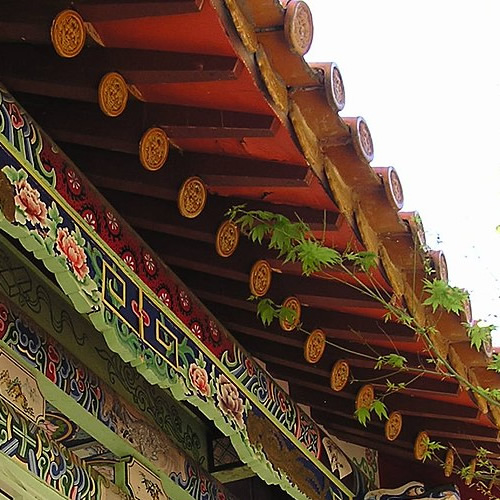
Photo by Golden Wattle
The pavilion, water feature, entrance arch-way and lantern took the four Chinese men plus many Australian workers eight weeks to construct and proved to be an amazing joining of two cultures, as neither could speak the others language. The majority of the instruction was carried out through an interpreter or simply by using sign language.
Camellia Garden Chinese Pavilion in Wagga Wagga Botanic Gardens
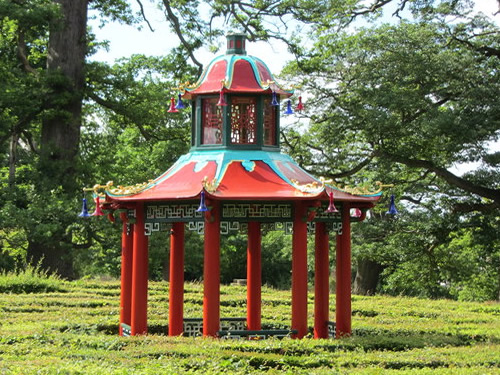
Photo by Paul Brooker
This Chinese Victorian Garden Building is in the center of Hornbeam Maze at Woburn Abbey in Bedfordshire, England. The building was added sometime around 1833, based on a design from Sir William Chambers’ Designs of Chinese Buildings.
The book includes drawings and diagrams for authentic and reproduction Chinese buildings. It is still in print or you can buy beautiful antique copies of it.
Reprint of Design of Chinese Buildings by William Chambers on Amazon
Sir William Chambers’ Designs of Chinese Buildings on eBay >
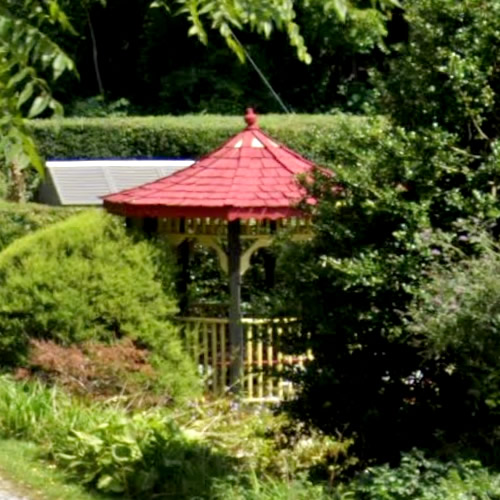
It’s just paint, but so adorable!
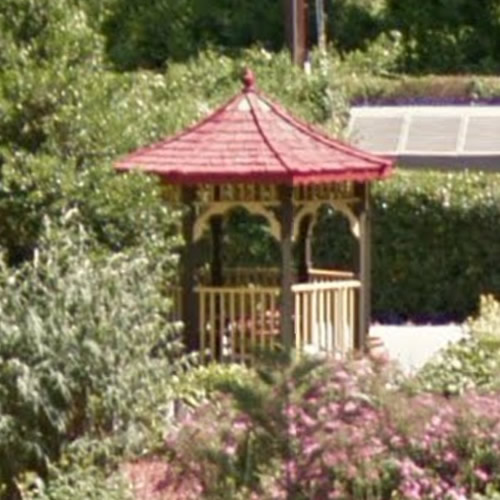
Discover more from my design42
Subscribe to get the latest posts sent to your email.

